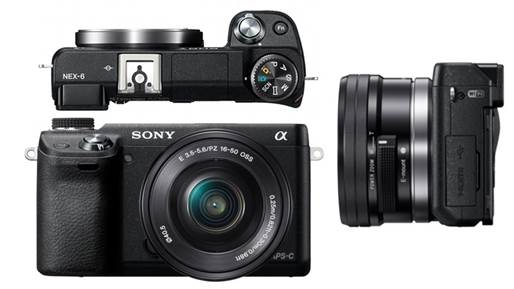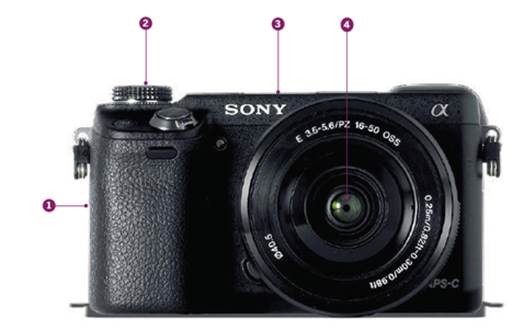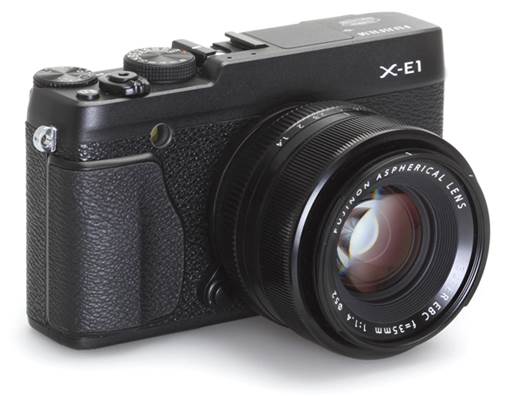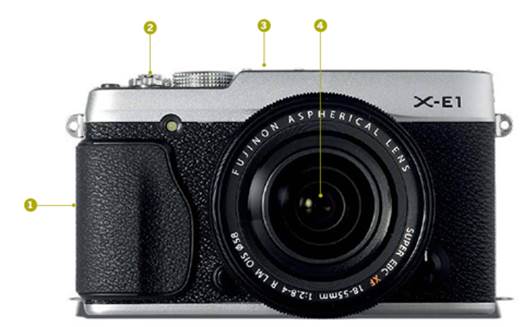Throw off the chains of DSLR
oppression: get professional quality snaps from smaller but more stylish boxes
Compact system cameras (CSCs) have a less
than arousing name, but boy is they sexy things. They serve up far better image
quality than your smartphone, but are still pocket able, especially if you wear
the attire of a habitual poacher or shoplifter.
Achieving results comparable to a DSLR but
without the attendant bulk or learning curve, these smaller,
interchangeable-lens cams also offer considerably more chic looks. With updated
versions from all the big names, plus a late entry into the canon from, er, Canon,
competition is hitting up and prices are falling. So, time to get stuck in?
Contenders: Our famous five compact system cams
·
Sony NEX-6: $882
·
Fujifilm X-E1: $1,589
·
Nikon 1 V2: $TBC
·
Olympus E-PL5: $794
·
Canon EOS M: $882
Sony NEX-6: $882
Sony brings the CSC bang up to date with
Wi-Fi, apps and more...
Don’t be fooled by its leather apparel; the
NEX-6 is a modern beast. It’s the only camera on test with built-in Wi-Fi,
letting you upload snaps to Facebook or Flickr directly.

Sony
NEX-6
The essentials are well catered for here,
with a large APS-C CMOS sensor that’s more than capable of sharp images when
combined with the bundled 16-50mm Power Zoom. As this is a mechanized zoom,
altering framing whilst shooting video is achieved much more smoothly than most
of us could manage manually. Image stabilization is built into the lens, as
with most compact system cams, and in combination with the NEX-6’s rounded
grip, it keeps shake to a minimum.
Combining well placed back buttons, a
top-mounted dial and virtual adjustments via the three-inch touchscreen, this
always feels intuitive. The addition of the electronic viewfinder is also
welcome, as is the way it automatically activates when you place your eye to it
– useful when quickly changing view.
Image wise, the Power Zoom lens maintains
detail across the frame, even if there are familiar bugbears such as fringing
between areas of high contrast. We have a slight preference for the warm detail
of the Canon EOS M and its DSLR-like depth of field, but it’s a very close call
between that and this.
As well as Wi-Fi there are also apps
available via Sony’s PlayMemories, including the free Remote Control which lets
you use your smartphone to change camera settings and more expensive options
such as the $9.99 Time-Lapse which stitches movie clips from your stills.

The
essentials are well catered for here, with a large APS-C CMOS sensor that’s
more than capable of sharp images when combined with the bundled 16-50mm Power
Zoom
It’s gimmicky, but we like it. If you’re
looking for cutting-edge extras, more-than-decent image quality and out-of-the-
box usability – there’s a flash included too – the NEX-6 is well worth a
squint.
Details
1. Screen: Three-inch touchscreen that can be angled for awkward shots
2. Controls: Seamless controls, with mode dial, rear buttons and
touchscreen operation
3. Video: Full-HD video at up to 50fps is above average
4. Kit lens: 16-50mm Power Zoom means no manual zooming

Sony
NEX-6 details
Accessorize: Sony E-mount lenses
As well as 11 E-mount lenses, Sony NEX
users have the option to add existing DSLR A-mount optics via the LA-EA1
adaptor ($194), giving a wealth of choice second only to Canon and Nikon.
The verdict
Love: Good image quality. Motorized Power
Zoom makes for smooth video. Wi-Fi built in
Hate: Dull looks. Pics are marginally less
impressive than the Canon EOS M
T3 says: The NEX-6 is currently the most
comprehensively featured CSC you can buy
Rating: 4/5
Sony NEX-6 Specifications
·
Sensor: 16.1-megapixel, 23.5x15.6mm APS-C CMOS
·
Video: 1920x1080 at 50fps
·
Lens: 16-50mm
·
Lens mount: Sony E-mount
·
Screen: Three-inch, 921,6k-dot LCD
·
Formats: JPEG, RAW, JPEG+RAW
·
ISO range: 100-25,600
·
Battery life: 360 shots
·
Dimensions: Height: 67mm; Width: 120mm; Depth:
43mm; Weight: 287g
Fujifilm X-E1: $1,589
The X-E1’s retro look is matched by
traditional DSLR-like features

Fujifilm
X-E1
This gorgeous, Rangefinder-style camera –
Fujifilm’s second X series CSC – commands a premium price tag. It’s not just
the cost that’s big though, the X-E1 is also a pocket splitting 129mm thick and
heavy at 350g.
Into that large frame Fujifilm has packed a
DSLR-sized APS-C sensor, delivering 16.3-megapixel shots and 1920x1080 pixel
videos at 24fps. Scenes are composed via an OLED EVF that activates when you
place your eye to it, or the 2.8-inch LCD.
In terms of autofocus, the X-E1 delivers a
swift-ish 0.1-second response when twinned with its bundled zoom. And, while
there is a noticeable fraction of a second delay as the screen adjusts, it’s
swift enough. During video recording the autofocus automatically adjusts, but
it’s not instant either, causing footage to go soft for a couple of seconds
before drifting back into focus. That said we were able to produce attractive
shallow focus effects reminiscent of those from a DSLR when shooting closer
subjects, which suggests this as an able tool for portraits.

Scenes
are composed via an OLED EVF that activates when you place your eye to it, or
the 2.8-inch LCD
With no touchscreen, the back plate buttons
control everything. Press the menu button and five shooting folders, plus a
further three setup menus, present themselves. It’s via these screens you can
access features such as the Film Simulation mode, which gives snaps an analogue
feel.
The 350-shot battery life is amongst the
best on test and you get a popup flash plus a hot shoe.
This Fujifilm cam has a retro feel, from
its leather-clad look to its no nonsense approach to photography. There’s no
Wi-Fi connectivity, apps or any of that modern stuff. It’s a solid, quality
compact system cam for traditionalists – specifically, ones with rather deep
pockets.
Details
1. Screen: The 2.8-inch LCD is pretty average, but there is also an
electronic viewfinder
2. Controls: With no touchscreen, dials and buttons control all
3. Video: Full-HD video can be shot at up to 24fps, but doesn’t have
its own switch
4. Kit lens: The stabilized zoom lens delivers impressive results

Fujifilm
X-E1 details
Accessorize: Fujifilm XF mount lenses
There are currently just five compatible XF
mount lenses, the 18-55mm kit lens, plus 60mm, 35mm, 14mm and 18mm prime
lenses. A further five are scheduled to arrive throughout 2013.
The verdict
Love: DSLR-like image results.
Rangefinder-style design. Viewfinder and built-in flash
Hate: Slow-ish autofocus, especially with
video. Only five lenses. Priciest and least compact camera on test
T3 says: The X-E1 has a lot in common with
a DSLR: great shots, big body and high price
T3: 4/5
Sony NEX-6 Specifications
·
Sensor: 16.3-megapixel, 23.6x15.6mm APS-C
X-Trans CMOS
·
Video: 1920x1080 at 24fps kit
·
Lens: 18-55mm
·
Lens mount: X-mount
·
Screen: 2.8-inch, 460k dot LCD
·
Formats: JPEG, RAW, RAW+JPEG
·
ISO range: 100-25,600
·
Battery life: 350 shots
·
Dimensions: Height: 75mm; Width: 129mm;
Depth: 38mm; Weight: 350g